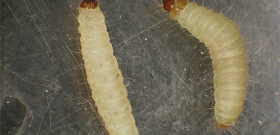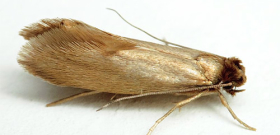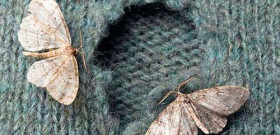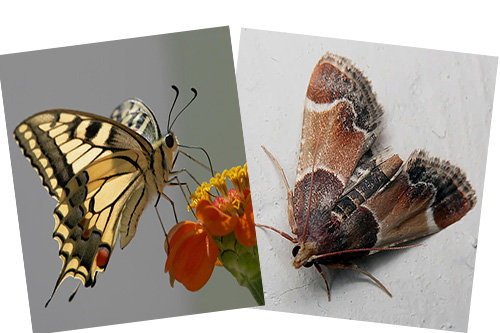
Almost all moths really do not have a proboscis. But this does not mean at all that the moth is not a butterfly. But why the moth does not have a proboscis is a really interesting question, and evolutionary biologists who are well versed in the biology and life of these insects can answer it.
The proboscis is an organ that is absent as unnecessary
Butterflies need a proboscis in order to normally feed on the nectar of flowers - it is with the help of this organ that an insect can reach deeply hidden aromatic nectaries in plants. The vast majority of butterflies eat just such food.

It is interesting
Despite the adaptability of butterflies to feeding on the nectar of flowers, there are species among them whose food preferences do not at all correspond to the “image” of these insects. For example, butterflies are known that feed on excrement and animal corpses (by the way, it is among them that the largest and most beautiful butterflies in the world are present), and there are even vampire butterflies. They can also attack a person, piercing the skin with their proboscis and sucking out a few drops of blood.
But among the whole variety of butterflies, 2000 species of moths stand apart: they do not feed at all in their adult state. They simply do not need a proboscis, or any other organs of eating food. This is the answer to the question why the moth has no proboscis.
In addition to the oral apparatus, many moths in the adult state also lack digestive organs (more precisely, they are underdeveloped). The task of adult moths is to mate and lay eggs, and therefore they live only at the expense of nutrients that they accumulate even in the larval stage.
It is the moth caterpillar that is the very pest that carefully cuts the fur on fur coats in the closet, gnaws holes in sweaters and furniture upholstery, spoils dry cereals and other food products in kitchens and closets. The caterpillar has a powerful gnawing apparatus, which even corn grits and semi-synthetic fabrics cannot resist.
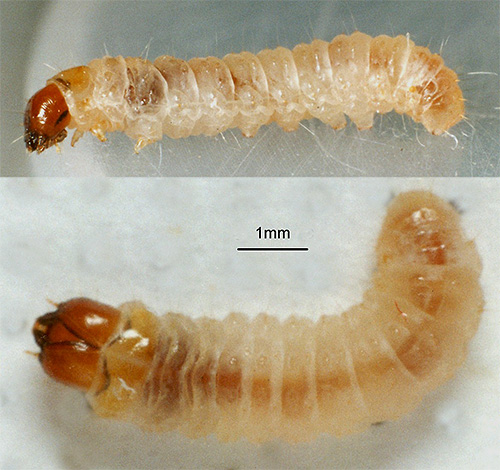
On a note
Contrary to popular belief, moths do not destroy synthetic fabrics. The larva can eat fabrics containing some synthetics and some natural materials, but they grow more slowly on such a diet than those that feed on natural wool or fur.
In some species of moth, the gnawing apparatus is retained in the adult stage. However, this does not mean at all that butterflies of these species can damage clothing - they are simply less evolutionarily mature and have not yet completely lost their nutritional organs.

Butterfly moth, as a rule, lives for a very short time - from several days to several weeks. At the same time, females try to move as little as possible, and males fly only at night. This provides a certain security for these insects, which fly relatively poorly and are not able to scare away predators. But there are no insects dangerous to humans among the moths.
Does the moth bite?
We can definitely say that the moth does not bite.Even moth larvae with their powerful gnawing mandibles will not be able to bite a person: their jaws are too small to bite through our skin. Yes, and this moth does not need at any stage of development - the moth will not receive anything from a person, and it will not be able to protect itself with its jaws.
The myth that moths bite appeared in those houses where pest butterflies constantly swarm under the ceiling, and mosquitoes sit in the corners. Butterflies catch the eye, and mosquitoes bite, and the unsophisticated resident of the apartment ties this picture together: he is bitten by those he sees. The wrong impression is created that it is the butterflies that bite, although they do not have sucking proboscises at all.
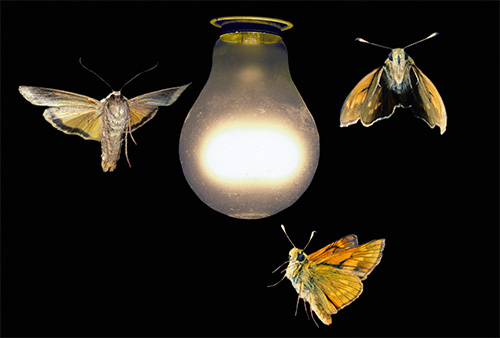
On a note
The world-famous vampire butterflies are not moths. Those blood-sucking butterflies that were found in Siberia belong to the scoop family, in the same family there are tropical species that can pierce even the thick skin of a buffalo with their proboscis.
Moth like a real butterfly
Otherwise, the moth is a typical butterfly, with the wing structure peculiar to butterflies, the methods of visual and chemical communication, and the seasonal biorhythm.
The absence of a proboscis in a moth can be primary and secondary:
- in primary toothed moths, the chewing apparatus of adult butterflies was inherited from their ancestors
- butterflies of the second type of moth had a mouth apparatus in the past, but lost it, ceasing to feed in the adult stage. It is to the second type that all domestic pests belong.
The pronounced difference between a caterpillar and a butterfly is a very wise move of nature and evolution. At different stages of development, individuals of the same species practically do not meet each other and do not create food competition with each other.This increases the chances of survival of this species.
Moths living in the wild have a clear chronological development cycle: the caterpillar develops on organic remains, in the nests of mammals and birds, feeding on feathers and wool, in ears of cereals during the warm period of the year. At the end of summer or autumn, caterpillars pupate, and then butterflies emerge from pupae, laying eggs. It is the eggs that overwinter, and in the spring, with the advent of food, larvae appear from them.
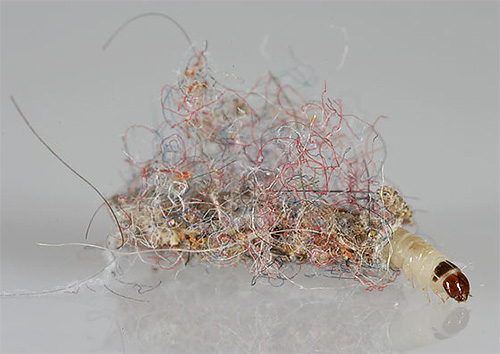
Those members of the family that live in the tropics or in human homes do not differ in such seasonality of development. In them, the process of reproduction and development proceeds without reference to the season at the rate that the food supply allows.
Review:
“Near the house I never paid attention to such a gray butterfly like a big moth. Well, they swarm themselves, and they swarm around the lamp at night. Only later was it explained to me that it was in this butterfly that the caterpillars damaged the cabbage. In short, it's a cabbage scoop. That's when I started to knock them out near the lamp with a fly swatter.
Alexander, Privolnoe
Moth caterpillar and its mouthparts
In the structure of the moth caterpillar, everything is adapted in order to eat as quickly as possible and gain weight. In fact, it is a universal consumer of edible raw materials and a powerful processing factory.
One caterpillar of an ordinary butterfly (not a moth) can consume several times more food per day by weight than it weighs itself. This is not typical for moth caterpillars - their food is quite coarse, and they eat less. Accordingly, they grow more slowly than caterpillars of other species.
Like the caterpillars of other butterflies, the mouth apparatus of the moth caterpillar is of a gnawing type, consists of two mandibles with incisors on each, which ensures effective gnawing of tissue or hair fibers.
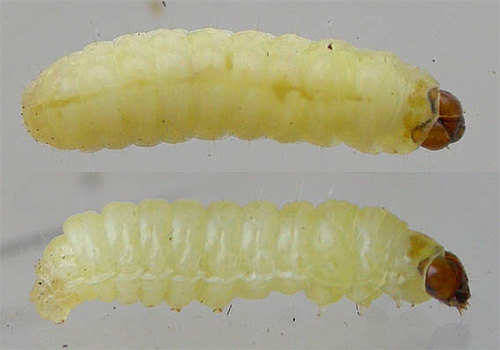
It is interesting
There are moths whose caterpillars live in the horns of African antelopes and feed on keratin, the substance of which the horns actually consist. And in other moths, the larvae feed on wax in bee hives (the so-called wax moth or moth).
In most species of domestic moth, the caterpillars are very similar in appearance. They have a light body with a yellowish or pinkish tint and a contrasting brown head. Their larvae are similar to the well-known codling moth caterpillars.
In general, various types of moths are generally recognized pests, and they harm not only clothing or food, but also trees, bushes and mushrooms. But at the same time, these butterflies do not pose an immediate danger to humans.

